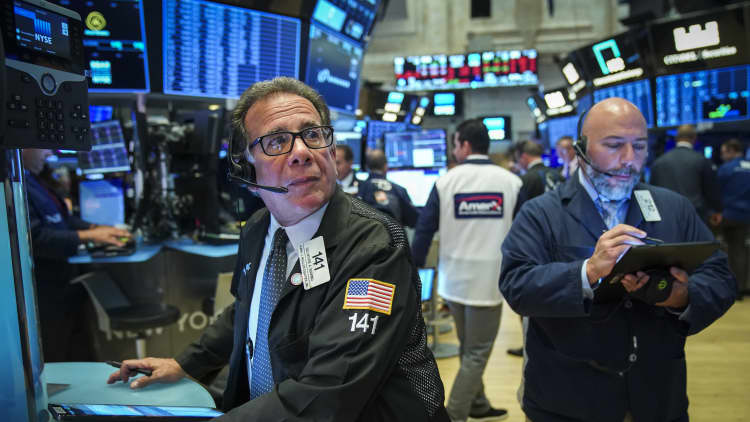
The bond market just did something it hasn't done since 2007.
The spread between the U.S. 10-year note and 2-year note inverted, a signal investors take as a recession indicator.
Four experts break down what comes next.
Jim Cramer, host of CNBC's "Mad Money," says the U.S. economy is in a good spot to withstand some of the headwinds facing the global economy.
"Our economy is uniquely not as sensitive because these are not exporters that need to have a dollar weaker. Remember our dollar is just getting stronger – an extraordinary rally in the dollar. I don't want to see it but I struggle to reach a conclusion that this is all bad given the fact that Germany has had these rates for some time and their market is not doing that badly even though they have an export economy. Their DAX in real terms is up even though they're exporting the Mercedez-Benz, the Volkswagen and BMW right to China. And those sales are very weak as we see the numbers from China so it's not the end of the world."
Erin Browne, managing director at Pimco, sees greater chances of a rotation coming to markets in the short term rather than a more severe downturn.
"If you look at the data even prior to 1980, typically you see the equity market go up about 4% in the 12 months post the yield curve inversion. That said, what you do see under the surface is a rotation out of the cyclicals and into the more defensive stocks and remember yield curve inversion – first for it to be a sizeable signal, it needs to be inverted for about three months. After that three-month inversion, you typically see within one to two years on average the economy turn and go into a recession but it doesn't necessarily mean that a recession is imminent."
Andy Brenner, director at National Alliance Securities, says weakening global economies signaled the inversion.
"What we saw overnight is the German economy came out with a negative GDP print, the global economies continue to be in turmoil and continue to be weakening and it wasn't a surprise to me the 2s/10s got inverted by 2 basis points overnight and got to about 2 basis points now. I don't see a recession on the rise in the U.S. but nonetheless that's where we're going and we think rates are going to go lower from here."
Ian Lyngen, head of U.S. rates strategy at BMO Capital, says this time looks different than the last.
"I'm certainly worried about a recession, I'm worried about a recession in 2020. I think what makes this particular event different than inversions we've seen in the past is [Fed Chair Jerome] Powell has already cut once. Typically, we don't see an inversion until after the point at which the market says the Fed needs to cut but they haven't yet."





